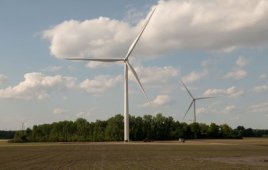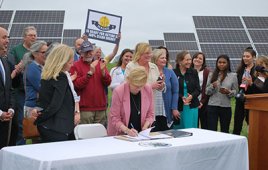Those of us privileged enough to live close to the Great Lakes have few water concerns. These bodies of fresh water are so huge they pose little restriction on their use. This summer in particular has brought rain two to three times each week, enough to keep lawns green and lush through August, a month when rainfall usually subsides and grass goes dormant. Water is almost no problem here.
But the bonus rainfall is deceptive. The Great Lakes are showing strain and from previous years. Lake levels rise and fall with the seasons but levels are lower than previous years, Lake Erie by more than a foot, according to NOAA. (The Administration keeps lake level records here: www.glerl.noaa.gov/data/now/wlevels/dbd/).
In a recent TV interview on the problem, a freighter captain said lower levels require that ships carry lighter loads and earn lower profits. Even the mighty Mississippi is running low enough to stall some barge traffic.
The topic here is water in usable quantities, which brings us to the amount used by conventional fossil fuel and nuclear plants. They use it to cool their power generation equipment that requires pumping in huge quantities of cool water from rivers or lakes and then discharging it at temperatures approaching 100°F. That heat all but releases the oxygen in the water making it uninhabitable by most aquatic life leading to fish kills and algae glooms.
The Union of Concerned Scientists has weighed in on the matter with a report Water Smart Power, Strengthening the U.S. electricity system in a warming world. It says conventional power plants accounted for 40% of U.S. freshwater withdrawals in 2005. (Full text of the report is here: www.ucsusa.org/watersmartpower.) The situation is generating push-back. Recently in Texas, the developer of a proposed 1,320 MW coal plant requested permission to tap 8.3 billion gallons of water annually from the Lower Colorado River. Regulators denied the request.
Of course, the water-energy collision, as the Union call it, is an opportunity as well for plant designers to find ways to cool and reuse water. Although not endorsed by the UCS, natural-gas fired plants would solve the coal-use issue and require less water for cooling. The UCS says nuclear plants need eight times the water as a gas-fired plant. To avoid the use of cooling water altogether, perhaps a two-phase fluid would be useful or a huge water-to-air heat exchanger. Air cooling may be possible if the equipment can accomplish the task. Such schemes will certainly drive up electric costs.
But ask wind-power advocates what a solution might look like and they would describe a wind farm. They know wind turbines need no water for cooling, a wonderful advantage conveniently overlooked by critics. In fact, it’s a little baffling that wind turbines do not instantly occur as a solution, instead as a lightning rod for the unenlightened. So again we find the wind industry providing a solution to the fuel and environmental shortcomings exacerbated by conventional power sources.
The modern wind industry is still in its infancy with constant improvements on the way. The recent Sandia Wind Plant Reliability Workshop, for example, highlighted applicable research and ideas for improving the power output and profitability of wind farms. Read more about the Workshop in this issue. In the meantime, you water worriers: think wind. WPE
Filed Under: Uncategorized





